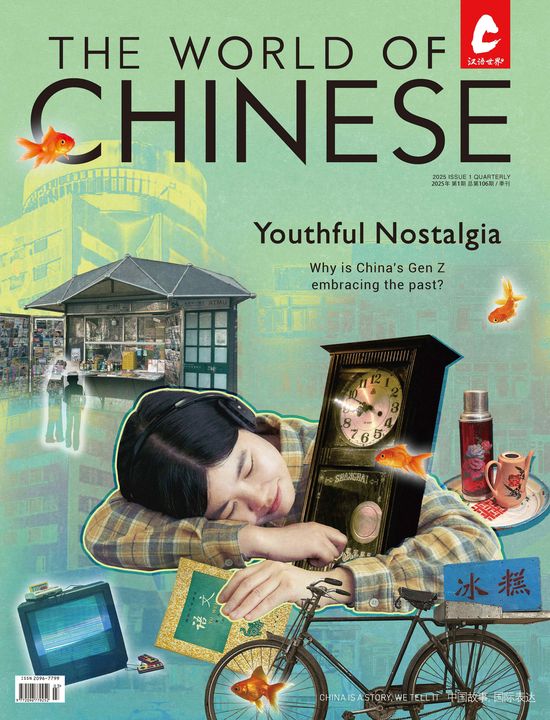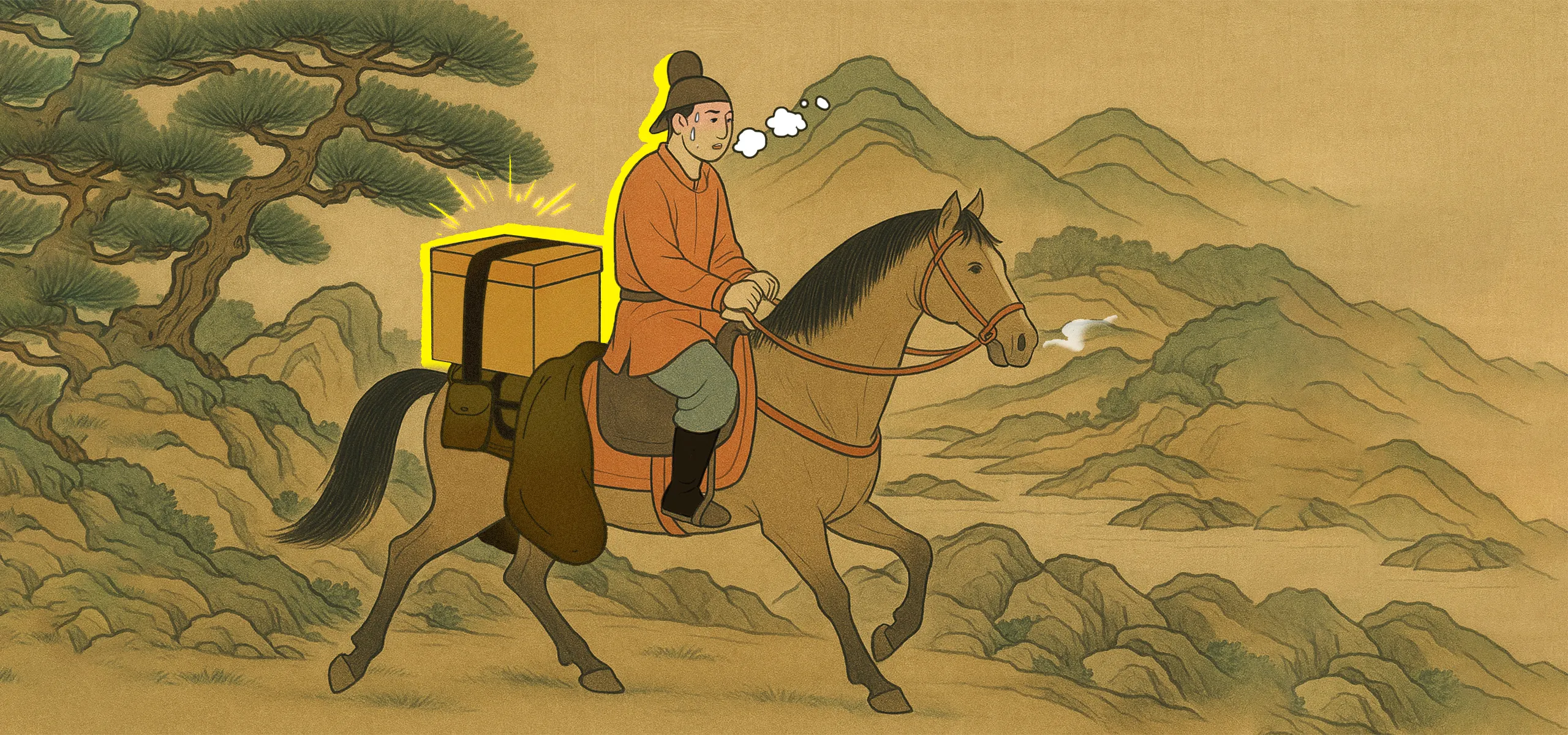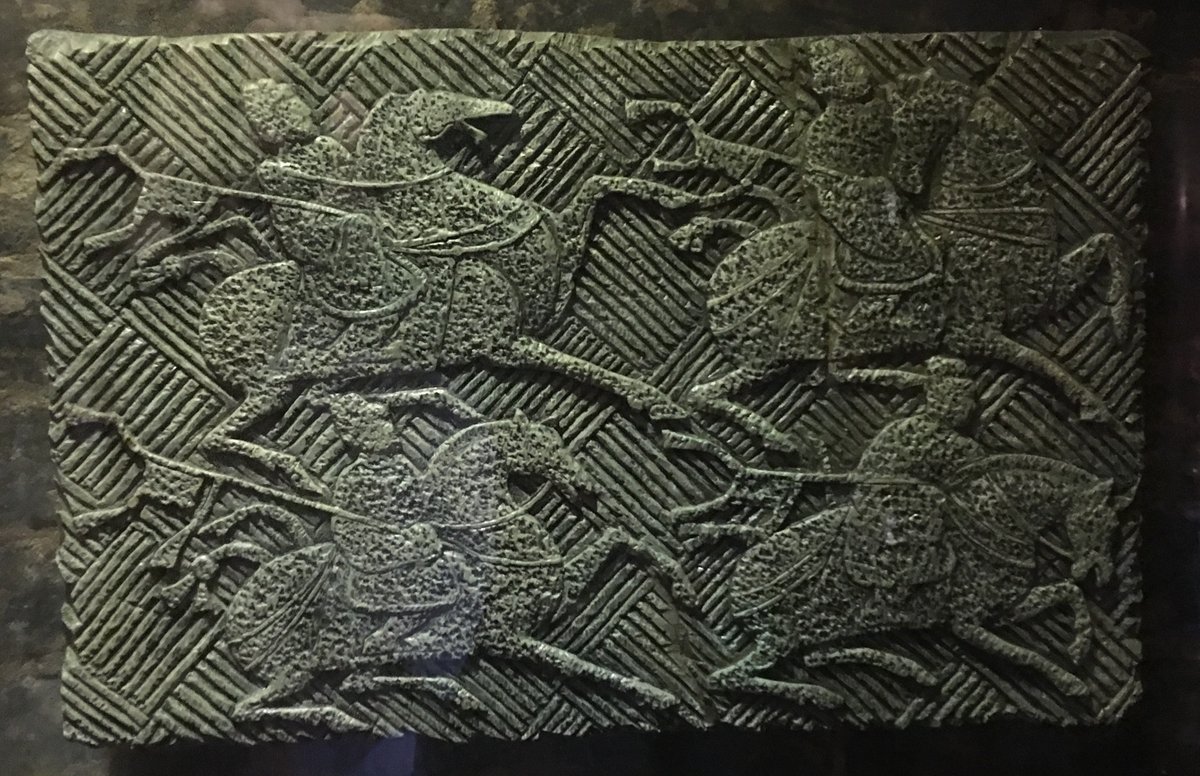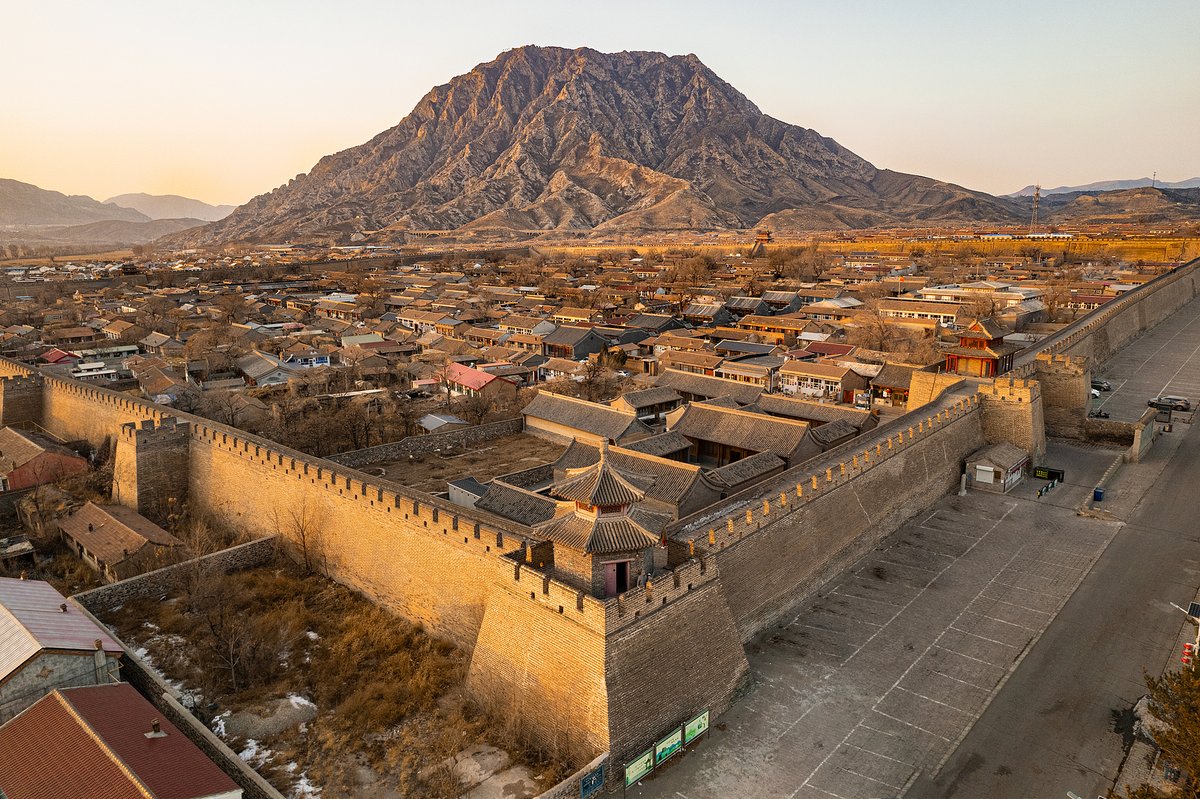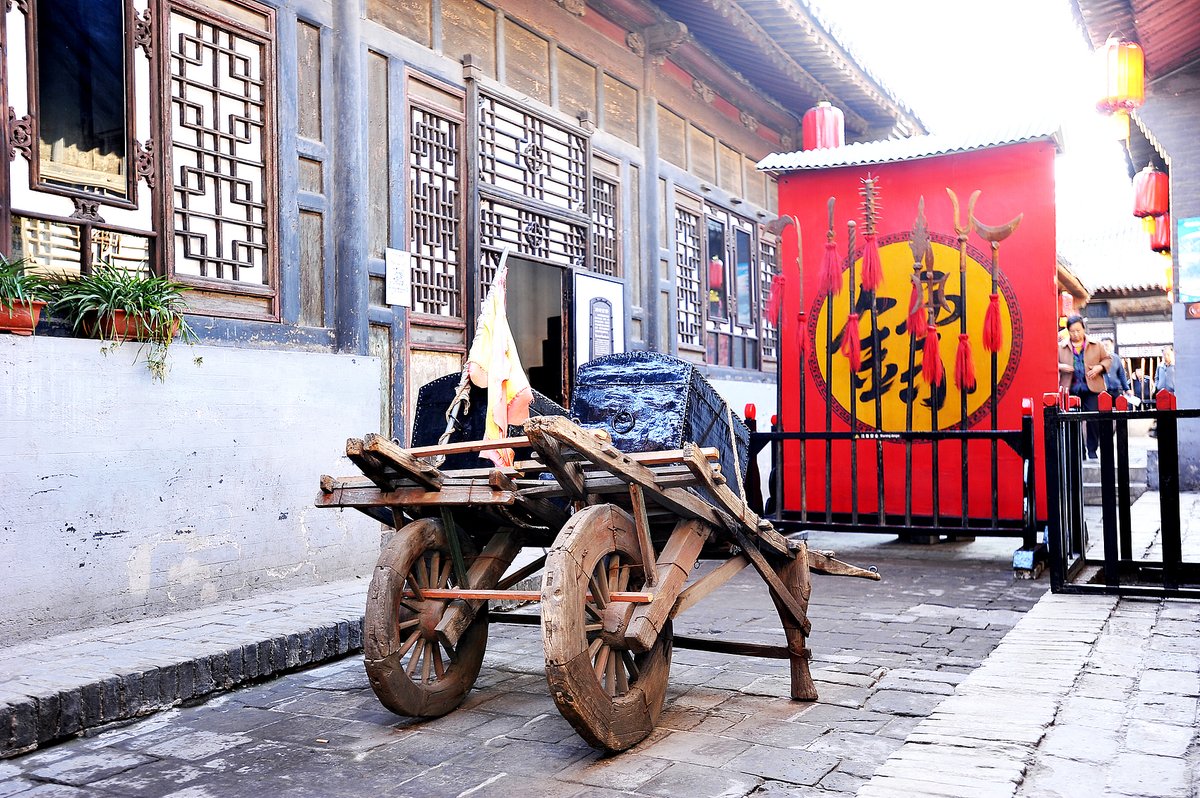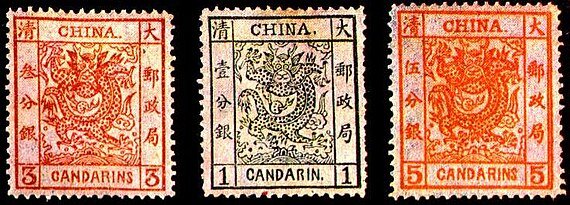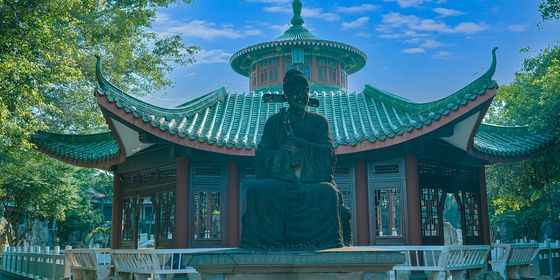Long before express delivery became an everyday essential, ancient China had built an intricate courier system, though its bureaucracy also bred corruption and chaos
The New Book of Tang (《新唐书》) recorded a widely circulated story: Yang Guifei (杨贵妃), the favorite concubine of Emperor Xuanzong, had a fondness for lychees, the tangy fruit whose tastiest varieties only grew in the southern heat. The Tang (618 – 907), however, housed their imperial court in Chang’an (modern-day Xi’an, in Shaanxi province), far away in the northwest. So, as any infatuated emperor would, Xuanzong ordered his couriers to regularly deliver lychees by horseback, speeding them hundreds of miles across the country. When the fruit finally reached Yang’s lips, it was still fresh, plump, and delicious. Traditionally, this story has been cited as evidence of Emperor Xuanzong’s debauchery and wastefulness. But on the other hand, one might pause and think: what an extraordinary feat of delivery.
Today, couriers have become a bedrock of daily life in China, trumpeted as one of “Four New Great Inventions” of the 21st century, along with high-speed railways, shared bikes, and mobile payments. Every day, waves of delivery drivers zoom through city streets and up apartment stairs, bringing customers all manner of household goods, clothes, electronics, and yes, lychees. According to data from the State Post Bureau, China’s express delivery volume surpassed 170 billion pieces in 2024, maintaining its position as the world leader for 11 consecutive years.
Read more about life in ancient China:
- Paths to Power: A Guide to China’s Civil Servant Selection Systems
- Ancient Snitches: How China’s Emperors Encouraged Informants
- A Trip in Time: How Did People Travel in Ancient China?
In fact, China’s postal industry had already emerged over 3,000 years ago in the Zhou dynasty (1046 – 256 BCE). According to the Rites of Zhou (《周礼》), the dynasty employed officials known as “Xingfu (行夫),” who were responsible for postal and logistics services, primarily conveying government orders and military intelligence.
Around the first century BCE, various major vassal states had institutions similar to post stations, though they went by different names. Some were called “Ju (遽),” others “Ri (驲),” and some “Chuan (传).” However, when the Qin state unified China and established the Qin dynasty in 221 BCE—ushering in over 2,000 years of imperial rule—it standardized these names to “You (邮),” a term still used today for the postal industry.
The Qin dynasty (221 – 206 BCE) continued the relay system for document delivery from earlier dynasties, with couriers transferring documents from one station to the next along the imperial highway. Before overthrowing Qin and founding the Han dynasty (206 BCE – 220 CE), Liu Bang (刘邦) was the head of one of these postal stations. To ensure confidentiality, the bamboo slips and wooden tablets on which messages were written were sealed with clay impressions after being tied up by ropes.
Although the postal system during the Qin and Han dynasties was already quite advanced, it was exclusively used to convey government orders and military intelligence, and was not allowed for civilian communication. The transmission of letters and goods among civilians mostly relied on acquaintances who would carry them on their behalf. However, it could be very risky to entrust non-official deliverymen. A New Account of the Tales of the World (《世说新语》), a compilation of character sketches and anecdotes from the 1st to the 5th century, records the story of a rather unreliable courier, Yin Hongqiao (殷洪乔). During the Eastern Jin dynasty (317 – 420), Yin set off for another city to serve as a prefectural governor. Before his departure, others entrusted him with over a hundred letters. However, as soon as he left the city, he threw all the letters into the river, saying: “Those that sink will sink on their own, and those that float will float on their own; Yin Hongqiao cannot serve as a courier.” The story illustrates Yin’s eccentric nature, which was admired at the time for its disregard for social etiquette. Yet for those who never heard back, his indifference was nothing short of infuriating. Ever since, the chengyu “Hongqiao’s misdeeds (洪乔之误)” has referred to the lost letters.
During the Sui (581 – 618) and Tang dynasties, with the opening of the Grand Canal connecting the north and south, express delivery via waterway also developed rapidly. The delivery system took shape, centered around the capital and extending to all parts of the country. According to the records in the Six Codes of the Tang Dynasty (《唐六典》), an administrative code compiled during Emperor Xuanzong’s reign in the 8th century, there were a total of 1,639 post stations nationwide. This included 1,297 land post stations, 260 water post stations, and 86 combined water and land post stations, all staffed by 17,000 postmen. Poet Cen Shen (岑参) at the time described the well-developed courier network in his poetry: “One post station after another, the post riders flow like stars. Setting off from Xianyang at dawn, reaching the top of Mount Longshan by dusk.” It was this highly developed system that allowed concubine Yang to get her fresh lychees.
The Tang dynasty also had strict regulations about express delivery. The Tang Code with Commentary (《唐律疏议》) issued in the mid-7th century stipulated that anyone who failed to send documents that should have been delivered by post, or sent documents that should not have been, would be punished with 100 strokes of the cane. Those who leaked important confidential information via letters faced the death penalty by hanging, while those who disclosed non-critical secrets were sentenced to one and a half years of penal servitude.
Such stringent regulations overwhelmed the ancient couriers. Meanwhile, due to the reduction of funds by the imperial court and the edicts of corrupt officials, the lives of deliverymen were severely oppressed. During the reign of Emperor Wuzong, an uprising led by couriers broke out in present-day Gansu in northwestern China. The rebellion gained support from postal workers along the way, and eventually, the mailmen rebels broke into the city, killing several local officials. Though the uprising was ultimately suppressed, the government was significantly shaken, as they were temporarily unable to gather intelligence regarding the rebellion.
Following the Tang, the Song dynasty (960 – 1279) reformed the postal system. Before the Song, the system was usually managed by civil officials, and the postmen were conscripted civilians, with delivering mail being a form of indentured labor. The Song dynasty transferred the management of the postal and relay system to the Ministry of War, with funding allocated from the military budget. All personnel in the system were soldiers, which greatly enhanced the efficiency of communication.
During the Ming dynasty (1368 – 1644), the misuse of post stations for private purposes became increasingly rampant. Towards the end of the dynasty, Liu Mao (刘懋), a military official, petitioned Emperor Chongzhen, stating that the post stations in various prefectures and counties were incurring enormous expenses, with most of their uses devoted to private affairs. He suggested dismantling the post stations. The emperor agreed to reduce the size of the postal system. As a result, a groom named Li Zicheng (李自成), who had been working at the Yinchuan post station, lost his job. With no other options, he organized a rebel army and eventually overthrew the Ming dynasty.
It was also in the Ming dynasty that organizations dedicated to helping civilians send letters and goods began to take shape. Known as “civil letter bureaus (民信局),” these were not official institutions but purely civilian commercial organizations, first emerging in the southeastern coastal regions. By the 17th century, another type of organization, known as “security escort agencies (镖局)” emerged. These agencies charged fees to protect both people’s property and personal safety during transportation. Since those responsible for escorting valuables were often skilled in martial arts and had rich social experience, they were often given important roles in modern Chinese wuxia novels.
After the Opium War in the mid-19th century, China was forced to open its door to Western powers, and the postal industry thus underwent tremendous changes. On one hand, existing civilian letter agencies continued to develop; on the other, foreign postal services, known as “guest post offices (客邮),” entered China. Initially, they handled mail between foreign countries and treaty ports. Later, their operations expanded to mail services between treaty ports and, eventually, mail services between inland cities and towns. Against this backdrop, the Qing government also began to establish its own postal services.
In 1878, Li Hongzhang (李鸿章), then the Northern Trade Commissioner, decided to pilot postal services in five locations: Shanghai, Beijing, Tianjin, Yantai, and Niuzhuang (now Yingkou). He entrusted the management of these services to the General Administration of Customs, led by British politician Robert Hart. Hart established the Customs Postal Service based on the postal systems of the United Kingdom and other European countries. That same year, he also issued the first set of modern Chinese postage stamps as proof of payment. In 1896, the Imperial Postal Administration was founded, marking the birth of China’s modern postal service. In 1911, the year the Qing dynasty fell, the postal administration separated from the customs and began operating independently.
From the late Qing to the early Republic of China (1912 – 1949), railway construction entered a peak phase, and the telegraph also came into use. These new technologies inevitably transformed the traditional method of message delivery. In 1913, the Beiyang government announced the abolition of the old courier stations and replaced them with a modern postal system, aiming for a more efficient and standardized method of delivery. The ancient express delivery system, which had a history of more than 2,000 years, officially exited the historical stage.
